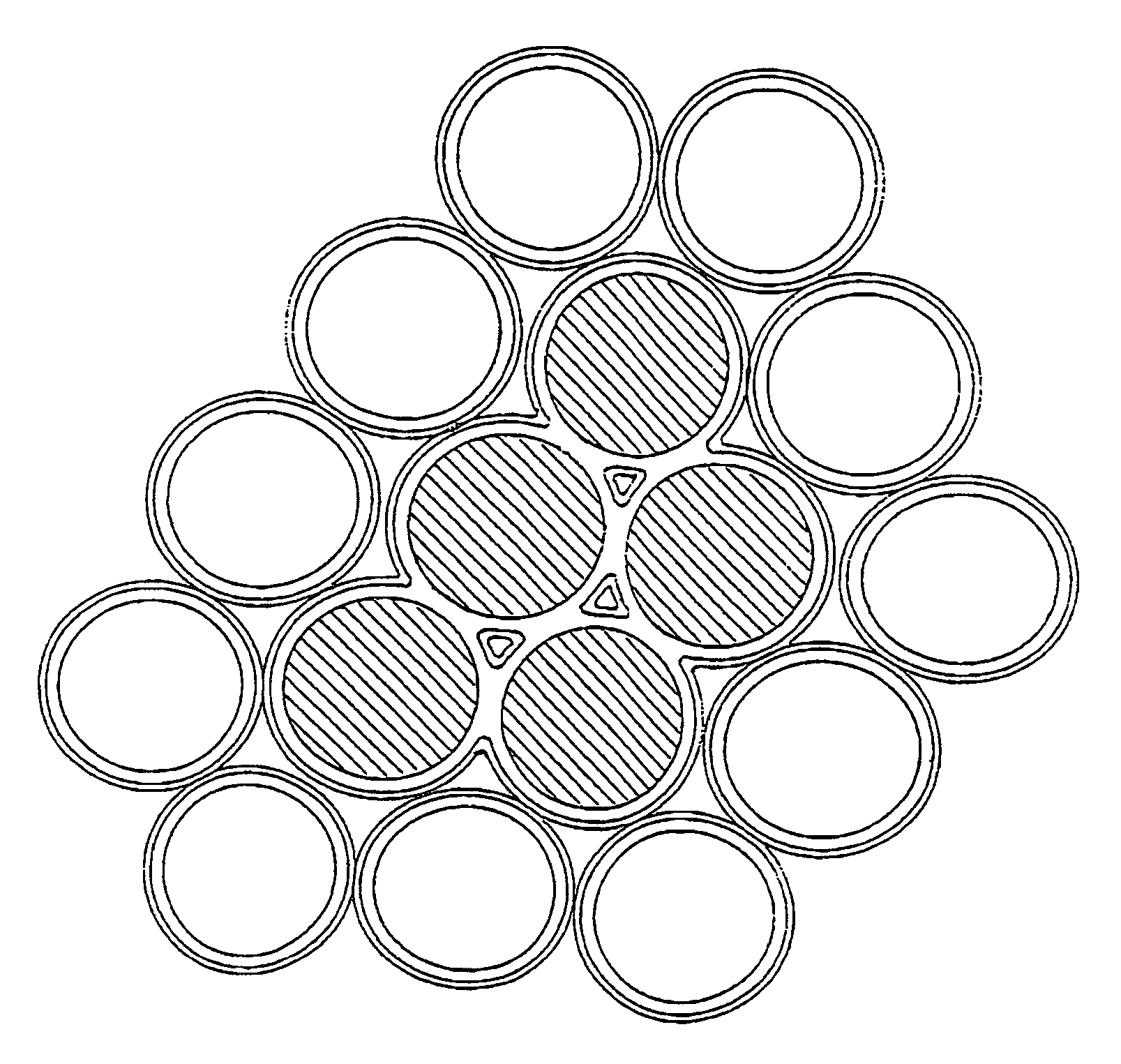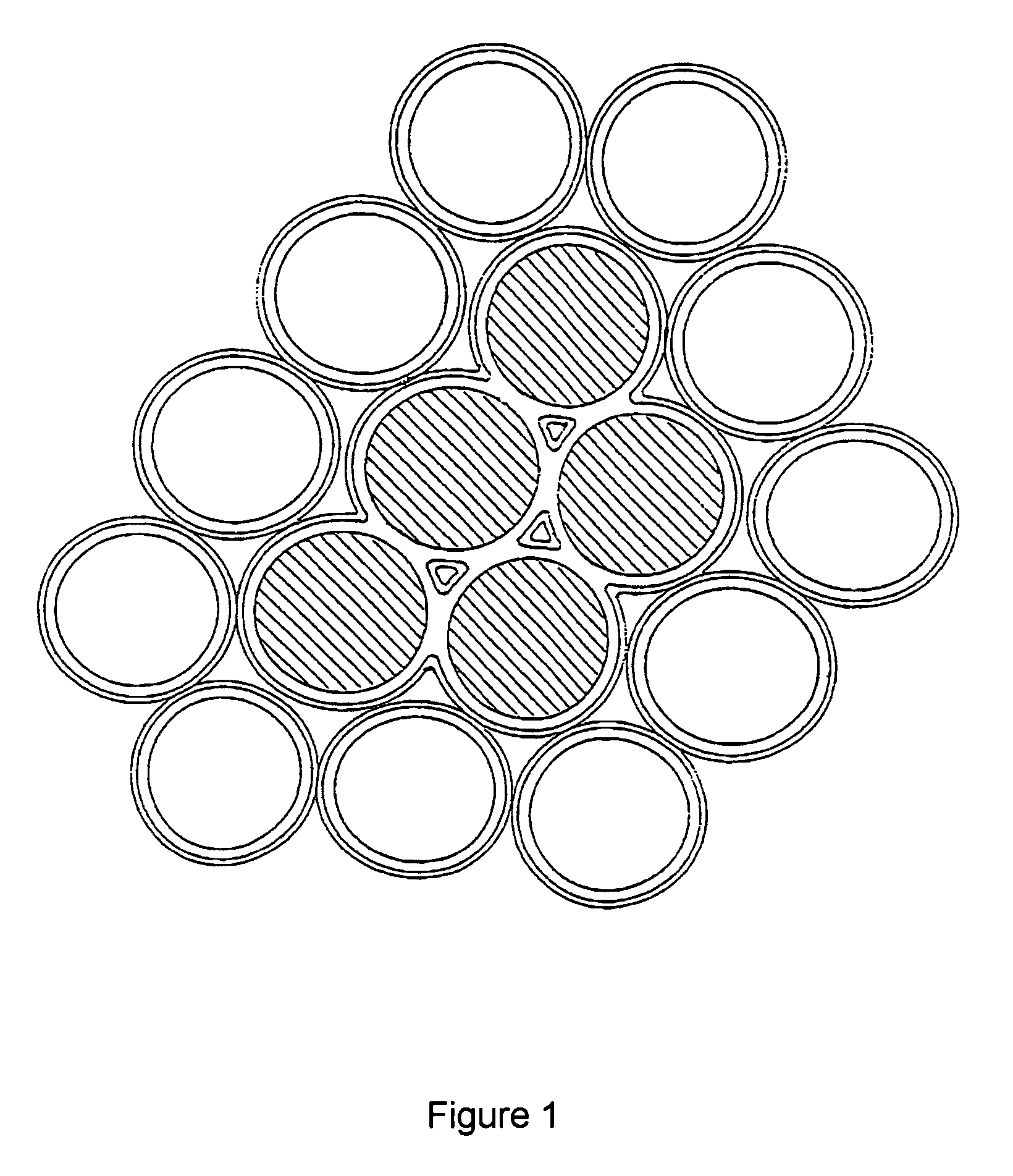Core-shell particles having non-polar outer surface and methods for producing a three-dimensional object from the particles
a technology of non-polar outer surface and core shell, which is applied in the direction of additive manufacturing with solid and fluid, natural mineral layered products, synthetic resin layered products, etc., can solve the problems of significant wear of spray nozzles, significant shrinkage of finished objects, deformation or crack formation, etc., and achieves reduced process temperature, reduced shrinkage, and reduced shrinkage
- Summary
- Abstract
- Description
- Claims
- Application Information
AI Technical Summary
Benefits of technology
Problems solved by technology
Method used
Image
Examples
Embodiment Construction
[0028]According to a first embodiment of the invention, a particle is in the form of a sphere. However, it will be understood that it may also take a form which deviates from the shape of a sphere, for example ellipsoidal or irregular form. The particle has a core of a polymer material, in this case of polymethyl methacrylate (PMMA), which is surrounded by an intermediate layer formed from polyvinylpyrrolidone (PVP). This material forms a polar, hydrophilic outer surface. Suitable polyvinylpyrrolidones are marketed under the names Luviskol and Luvitec by BASF; an acrylic polymer marketed under the name Bellac by Belland AG is also suitable.
[0029]The intermediate layer is produced by dissolving the polyvinylpyrrolidone in an aqueous medium, applying the solution to the particles and drying the particles. The solvent used in this case is preferably water, since this has the advantage of evaporating without leaving any residues. (However, ethanol or an aqueous ethanol solution is also ...
PUM
| Property | Measurement | Unit |
|---|---|---|
| softening point | aaaaa | aaaaa |
| thickness | aaaaa | aaaaa |
| thickness | aaaaa | aaaaa |
Abstract
Description
Claims
Application Information
 Login to View More
Login to View More - R&D
- Intellectual Property
- Life Sciences
- Materials
- Tech Scout
- Unparalleled Data Quality
- Higher Quality Content
- 60% Fewer Hallucinations
Browse by: Latest US Patents, China's latest patents, Technical Efficacy Thesaurus, Application Domain, Technology Topic, Popular Technical Reports.
© 2025 PatSnap. All rights reserved.Legal|Privacy policy|Modern Slavery Act Transparency Statement|Sitemap|About US| Contact US: help@patsnap.com


